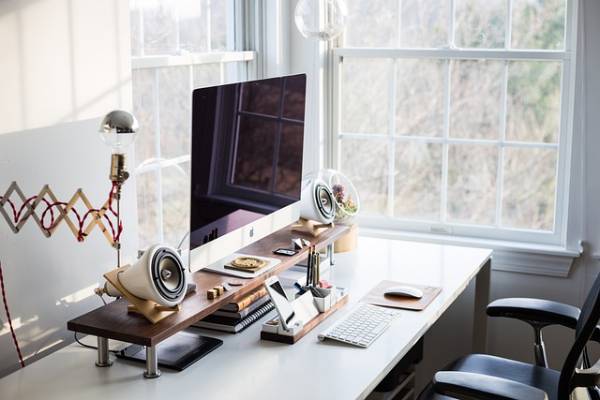In today’s fast-paced world, it’s easy for our living and working spaces to become cluttered and chaotic. The physical environment we inhabit has a profound impact on our mental state, productivity, and overall well-being. Transforming a disorganized space into a calm, organized haven isn’t just about aesthetics; it’s about creating an environment that supports your goals and promotes tranquility. Here’s a guide to help you turn chaos into calm by organizing your space for a more productive life.
1. Understand the Impact of Clutter
Before diving into organizational strategies, it’s important to recognize the impact of clutter. Clutter isn’t just about a messy room; it’s a physical manifestation of mental clutter. Studies show that a cluttered environment can increase stress levels, decrease focus, and lead to feelings of overwhelm. On the other hand, an organized space can enhance clarity, boost productivity, and contribute to a sense of calm.
2. Start with a Plan
Successful organization begins with a plan. Assess your space and identify areas that need attention. Whether it’s a cluttered desk, overflowing closet, or chaotic kitchen, pinpointing problem areas helps you prioritize tasks.
Steps to Plan Your Organization:
- Evaluate: Look at each area of your home or office. Which spaces are most problematic? Which ones do you use most frequently?
- Set Goals: Define what you want to achieve. For instance, you might want to streamline your workspace to enhance productivity or declutter your living room for a more relaxing environment.
- Create a Timeline: Break down your tasks and set deadlines. Organizing an entire house can be overwhelming, so tackle one area at a time.
3. Declutter Before You Organize
Decluttering is a crucial step before organizing. You can’t effectively organize items you don’t need. Begin by sorting through your belongings and deciding what to keep, donate, or discard.
Decluttering Tips:
- Use the “One-Year Rule”: If you haven’t used an item in the past year, consider getting rid of it. This rule applies to clothing, gadgets, and even sentimental items.
- Categorize: Sort items into categories—clothes, books, documents, etc. This helps in understanding how much you have and what can be discarded.
- Go Through Each Room: Tackle one room or area at a time to avoid feeling overwhelmed.
4. Implement Effective Organizational Systems
Once you’ve decluttered, it’s time to implement systems that work for you. Organizational systems vary based on personal preferences and the nature of the space.
Ideas for Different Areas:
- Desk Organization: Use trays, drawer dividers, and cable organizers to keep your workspace tidy. Keep essential items within reach and store less frequently used items in drawers or cabinets.
- Closets and Wardrobes: Use clear bins or labeled boxes for smaller items. Arrange clothing by category or color for easy access. Consider installing extra shelves or hooks if needed.
- Kitchen Organization: Use shelf risers, drawer dividers, and lazy Susans to maximize space and keep items accessible. Group similar items together, like baking supplies or utensils.
- Living Areas: Use multifunctional furniture with storage options. Incorporate baskets or decorative boxes for toys, magazines, and other clutter.
5. Establish Maintenance Routines
Maintaining organization requires ongoing effort. Establish routines to ensure your space remains clutter-free and functional.
Routine Maintenance Tips:
- Daily Tidying: Spend a few minutes each day putting things back in their place. This prevents clutter from accumulating and keeps your space tidy.
- Weekly Reviews: Dedicate time each week to assess and address any areas that may be getting disorganized. This helps in catching small issues before they become larger problems.
- Seasonal Decluttering: At least once a season, go through your belongings to reassess and declutter. Seasonal changes can bring new items and the need for periodic organization.
6. Create Zones for Different Activities
Dividing your space into specific zones for different activities can enhance organization and productivity.
Examples of Zoning:
- Work Zone: If you work from home, designate a specific area for work. This separation helps in maintaining focus and distinguishing work time from personal time.
- Relaxation Zone: Create a comfortable, clutter-free area for relaxation. This could include a cozy reading nook or a peaceful corner for meditation.
- Activity Zones: For multi-functional rooms, like living rooms or family rooms, designate different zones for different activities (e.g., a play area for kids, a reading corner, etc.).
7. Personalize Your Space
An organized space is also one that reflects your personality and preferences. Personal touches make a space feel more comfortable and enjoyable.
Ways to Personalize:
- Decor: Use artwork, plants, or decorative items that make you happy and enhance the ambiance of the space.
- Color Scheme: Choose colors that promote calm and focus. Soft blues, greens, and neutrals often create a peaceful environment.
- Comfort: Invest in comfortable furniture and accessories, like ergonomic chairs or soft cushions, to enhance the functionality and comfort of your space.
8. Benefits of a Well-Organized Space
The benefits of a well-organized space extend beyond mere aesthetics. An organized environment contributes to:
- Increased Productivity: A clutter-free space enhances focus and efficiency, making it easier to accomplish tasks.
- Reduced Stress: An organized space reduces feelings of overwhelm and creates a calming atmosphere.
- Enhanced Well-Being: A tidy environment promotes a sense of control and accomplishment, positively impacting mental and emotional well-being.
Featured Image Source: https://cdn.pixabay.com/photo/2017/08/01/13/36/computer-2565478_640.jpg
